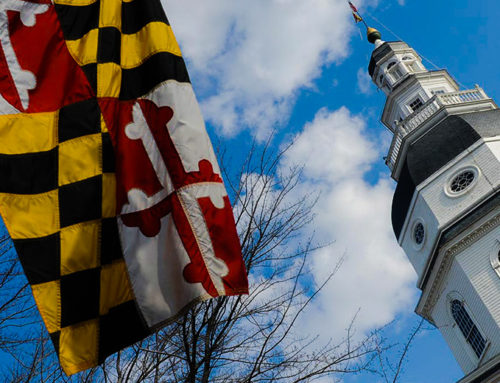View by Topic
Recent Articles
-
New Environmental Laws from the 2024 Maryland Legislative SessionSaturday, April 27th, 2024
-
EPA Designates PFOA and PFOS as Hazardous Substances under Superfund LawSaturday, April 20th, 2024
-
Federal Government Finalizes New Efficiency Standards for LightbulbsSaturday, April 13th, 2024
-
2024 IECC is Final After Addressing Preemption IssuesSaturday, April 6th, 2024
-
Settlement Portends Broad Failure in Attempts to Ban Natural GasSaturday, March 30th, 2024
View by Month/Year
“Green Building Law Update” Headlines
Recent Articles & News from
Stuart Kaplow’s blog
at GreenBuildingLawUpdate.com
- New Environmental Laws in Maryland: 2024 Brings Opportunities for Businesses April 28, 2024
- EPA Takes Action: PFOA and PFOS Now Hazardous Substances Under Superfund Law April 21, 2024
- Shedding Light on the Future: The Evolution of Lightbulbs in the Wake of New Energy Efficiency Standards April 14, 2024
- 2024 International Energy Conservation Code is Final After Addressing Preemption April 7, 2024
Subscribe to the Green Building Law Update!
Stuart Kaplow brings his expertise and extensive experience to the table with his unique digital publication, "Green Building Law Update". Subscribers receive regular updates to keep them informed about important issues surrounding Environmental Law, Green Building & Real Estate Law, as well as the emerging demand for Environmental Social Governance (ESG).
Get fresh content through the lense of Stuart Kaplow's cutting-edge expertise, innovative commentary and insider perspective. Don't miss another issue! Subscribe below.
Baltimore County’s Draft Historic Preservation Ordinance Does Not Seek To Arrest Time
Baltimore County is advancing the first major overhaul of its historic preservation program since its original enactment in the bicentennial year by Bill 17-76. Based upon Baltimore City’s ordinance, that 1976 enactment quickly became recognized as a model not only for protecting museum quality buildings, like the Towson Courthouse and Hampton Mansion, but also for preserving more commonplace buildings and structures that formed the fabric of the County’s past.
A quarter century later, at a time when historic preservation has become a predominant issue in real estate, that landmarks preservation listing program is proposed to be replaced with a three tiered hierarchical system of preservation affording the greatest protection to the most significant embodiments of history.
Any alteration or removal of exterior features on, literally, thousands of designated properties will be subject to the new enactment, and prohibited without a review and recommendation of the County Landmarks Preservation Commission.
Significantly, the new program will clear up much of the confusion that results from most owners not even knowing that their property is subject to historic preservation regulation because today the County regulates historic buildings on any of the several registries, including: the Maryland Historical Trust Inventory, National Register of Historic Places, national register districts, on the Baltimore County preliminary of final landmarks list, and within a Baltimore County local historic district. The confusions over the vagrancies of historic compilations will be remedied with a new single Baltimore County Inventory of historic properties. Copies of the inventory will be available at public libraries and on the County government website.
The element of the legislation that will certainly generate the most public debate is the expansion the definition of what may be designated historic from a “structure” to a “property.” Today only structures may be designated historic, but the idea that a property without structures may be designated historic (i.e., historic dirt) may be too expansive. Those familiar with the draft legislation suggest a compromise may be in the offing, permitting the protection of “historic sites,” as defined by the Secretary of the Interior’s Standards For Treatment Of Historic Properties, being “habitation sites, funerary sites, rock shelters, village sites, hunting and fishing sites, ceremonial sites, petroglyphs, rock carvings, ruins, gardens, grounds, battlefields, camp sites, sites of treaty signings, trails, shipwrecks, cemeteries, designed landscapes, and natural features (such as springs and rock formations) having cultural significance.”
Historic properties will be designated as within Class I, Class II or Class III. Class I properties “possess a very high degree of integrity” and are among the most historically, architecturally or culturally significant.
Class II properties are “good examples of a particular architectural style” and are historically, architecturally or culturally significant, but not to the degree of those in Class I. And Class III properties possess “some degree” of historic, architectural or cultural significance. The new law also prescribes an unclassified category to include properties on the County Inventory not yet classified.
Properties currently on the Landmarks Preservation List are to be transferred to the new County Inventory and a notice will be generated to each property owner within two years of enactment of the Bill allowing the owner to petition either removal from the County Inventory or reclassification into a class other than Class I.
Any person aggrieved by a classification decision of the Landmark Preservation Commission may appeal that decision to the County Board of Appeals.
Over three thousand properties will be initially listed on the new County Inventory and thereafter, any property with structures fifty years old or more, is a likely candidate for future County Council listing. While regulations were not promulgated under the current regulatory scheme, it is thought that the draft legislation will be buttressed by regulations providing, among other topics, guidance in choosing an appropriate treatment for a historic structure. Additionally, those regulations would give greater particularity to the category of properties that are culturally significant, including architecturally significant, but not historic. Such properties are eligible for a listing under this framework.
Any reconstruction, alteration or removal of exterior architectural features or the moving or demolition within a property, as well as construction or erection of a new building, fence, structure, object, or wall, including any excavation is to be defined as a “regulated alteration.” Properties within Class I and Class II may not undertake a regulated alteration without a review and recommendation of the Landmarks Preservation Commission. In reviewing such proposals, the Commission may apply the Secretary of the Interior’s Standards. Violations are criminal and civil penalties may also be assessed in an amount up to $100,000.
While the draft does not include a variance provision, it has been suggested that given the potential hardships on a property owner burdened for the general community good, including the eventualities of a casualty, like a fire that substantially destroys the property, a variance provision from the prohibitions of the new regulatory scheme needs to be incorporated.
Importantly, only structures within Class III properties may be demolished subject to documentation as may be required by the Commission, including text, drawings, or photographs creating an archival record of the distinguishing characteristics of the property.
The draft dovetails with the existing County code provision when it mandates that the seller of a Class I historic property disclose such to a buyer prior to signing of a contract of sale. And as with the current law, the draft largely exempts County owned buildings from preservation requirements.
As of the preparation of this article, the legislation is only a rough draft, but it is clear that Baltimore County will in the future take great strides in preservation of the past.
The proposed legislation accomplishes that oft-quoted articulation of John Lawrence, “[t]he basic purpose of preservation is not to arrest time but to mediate sensitively with the forces of change. It is to understand the present as a product of the past and a modifier of the future.”









